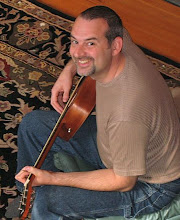Following my "tradition" of always blogging a few days late, let me give a brief synopsis of BlackBerry World this last week in Orlando.
The event was off-the-hook in terms of scale--free PlayBooks to everyone, free entrance to Universal Studios (RIM rented off the park for the night!), free concert with Dragonette and Paul Oakenfold. The magnitude and the logistical orchestration was very impressive. RIM had dozens of strategically placed people holding BBWorld signs to answer anyone's questions or direct people where to go, so you always felt taken care of. The audience was an assortment of 6000 BlackBerry enthusiasts, enterprise customers, press and analysts and regular people. The PlayBook was a main focus, and since QNX is the author of the PlayBook software, I was constantly busy with questions--talking the entire time I was on the show floor.
Happily, people were impressed. Despite the poor reviews that the PlayBook or RIM have gotten from the press in the last couple weeks, all the real people I talked to were far more favorable and forgiving. Partly this could have been because the software is in a continual state of improvement--the early previews provided to the press were several weeks older, and those several weeks made a big difference in the last remaining touches.
But I also think that partly it was because the press is comparing numbers--for them it kept coming back to the apps. "Apple has more apps." Maybe true. However, who needs 13 fart applications or 27 flashlights? One will do. Or maybe even zero. The PlayBook has more applications on launch than any other device has had (either iPad or Android), and because of the universal application platform approach that QNX is using, we can embrace many different software development platforms, allowing Adobe AIR & Flash, HTML5 & WebWorks, straight C + OpenGL-ES, Qt, Python, and yes, even Android applications to run. The development ecosystem for the PlayBook is broad, and that's going to enable application development in a big way.
The other thing that really impressed me was how well BlackBerry Bridge works. This is the functionality that tethers your PlayBook to the BB, allowing you to use the larger screen for entering/viewing email, contacts, calendar, notes, and messages. The performance was very clean and natural, and it's definitely a feature I'll be using a lot.
All of this is good news for automotive too--much of the functionality we developed for the PlayBook will be moving back into QNX CAR (with appropriate reskinning and reformulation for an automotive context, of course). And BlackBerry Bridge (or something very much like it) that serves up an HTML5 application from the phone is probably the best way to export a smartphone application to a car head unit.
It's going to be an exciting year!
Wednesday, May 11, 2011
Subscribe to:
Post Comments (Atom)





No comments:
Post a Comment